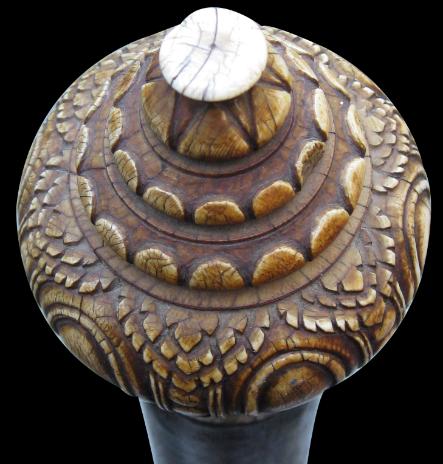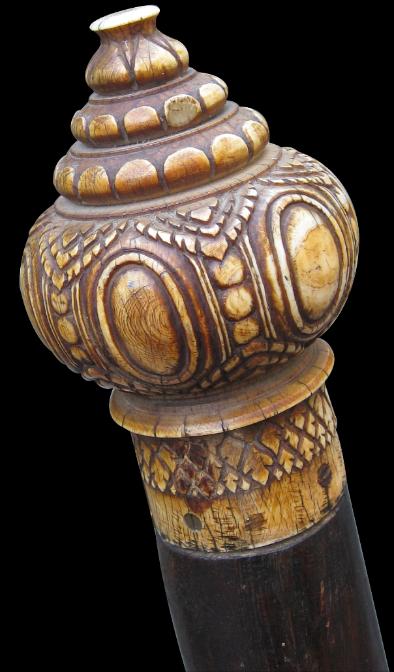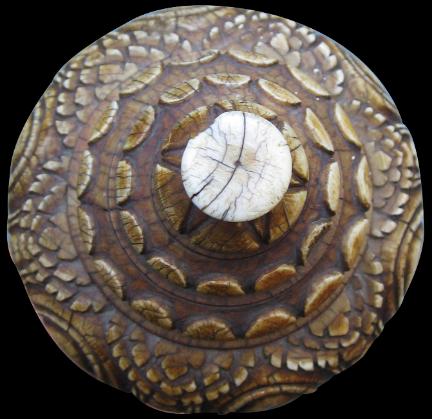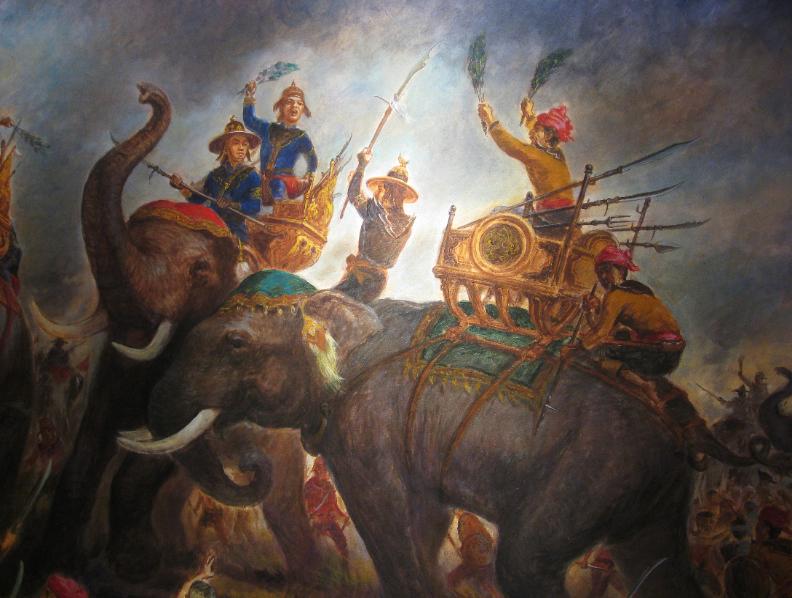
Thai Lanna Sword with Ivory
Rare Ivory & Copper-Gilt Elephant Combat Halberd
Lanna Kingdom (Northern Thailand)
circa 1800
length: 93cm
This long halberd or sword comprises a fierce cut steel blade with a copper ‘eye’, a wooden handle with a gilded copper mount (most of the gilding has worn away) and a large finial made of a single piece of well-carved ivory. The ivory finial has a superb, rich patina and has been elaborately carved in the form of a tiered lotus bud, very much in the northern Thai or Lanna style. (See Tingley 2003, p. 89 for a Thai ivory gunpowder flask carved in the same manner and with a similar patina.)
Swords such as these were for use from the back of a war elephant. They did not have scabbards and were attached to the howdah ready to be swung at a similarly mounted adversary designed in such a way so as to more easily hook him off his elephant.
A similar sword, illustrated in Conway (2002, p.79) is in the Chiang Mai National Museum.
According to Conway, the Lanna princes assembled troops throughout the kingdom by requiring village headmen to provide a quota of military conscripts. Troops were lead by a prince ruler (
chao) or by his deputy (uparat) or by some other member of the elite. Elephants were used to cross difficult terrain. Officers mounted on elephants had special swords such as the example here. The weapons commissioned for officers had silver, gilt and ivory handles. Many of these weapons were made by the Tai Lue ethnic group who enjoyed excellent reputations as sword makers. They operated out of the silversmith district along Wualai Road in Chiang Mai. Typically, the Lanna princes battled against Shan and Burmese troops.
The Lanna period dates from around 1600AD to its incorporation by treaty with the Kingdom of Siam in the late nineteenth century. The Kingdom comprised much of what is northern Thailand today. Its cultural identity is marked by a distinct spoken and written language which is related to but different from modern Thai, and a long history of codified law. Chiang Mai served as the Lanna capital for much of the Kingdom’s existence.
References
Conway, S., Silken Threads Lacquer Thrones: Lan Na Court Textiles, River Books, 2002; and Tingley, N., Doris Duke: The Southeast Asian Art Collection, The Foundation for Southeast Asian Art and Culture, 2003.
Provenance
UK art market.
Inventory no.: 974
SOLD






Photograph of part of a painting in the National Museum in Bangkok, showing a battle scene between soldiers mounted on elephants.
Click on the video to see the relative size of this item.

